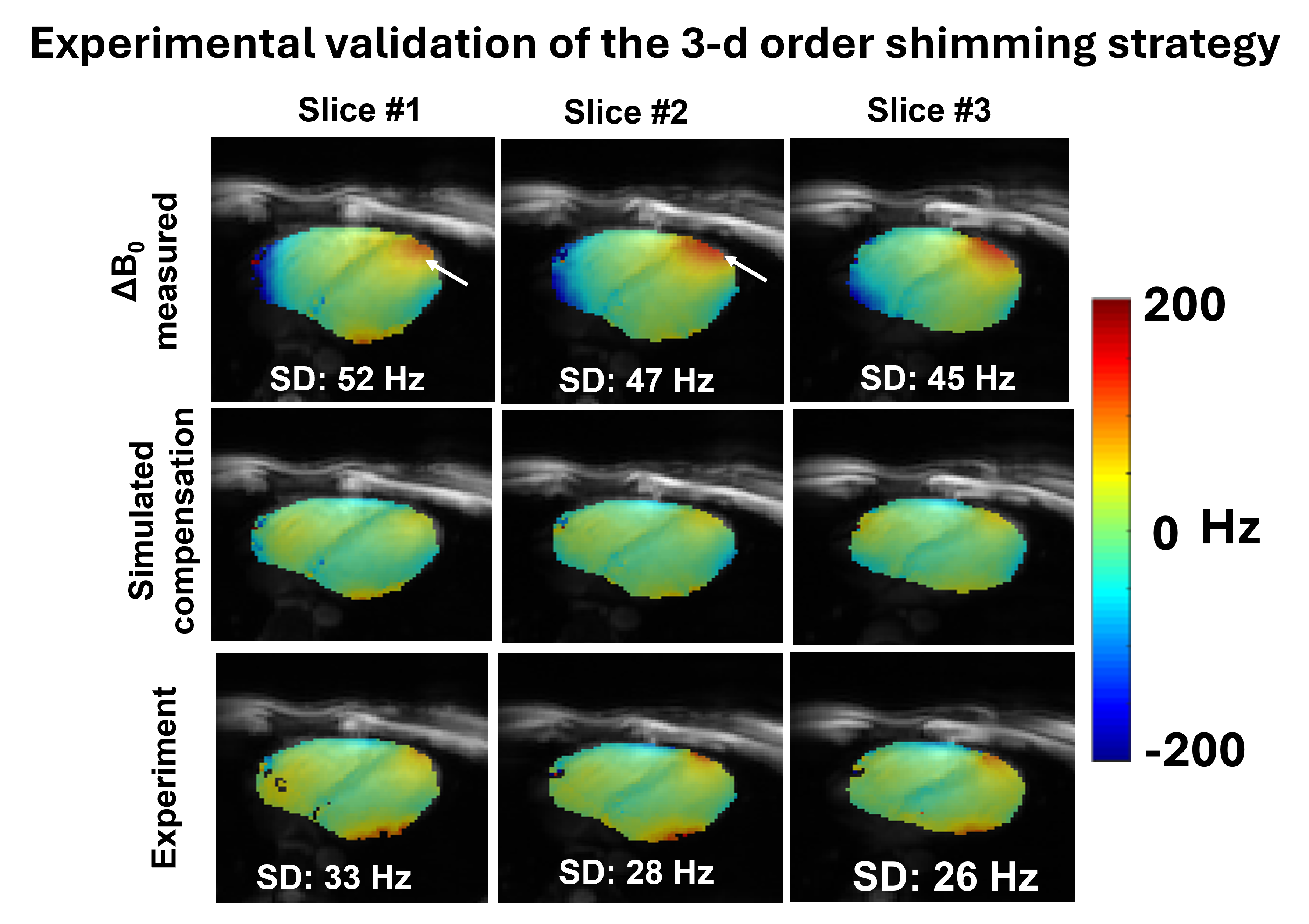Development of the optimal B0 shimming strategies for cardiac MRI at 7T
Calibration of the Shimming Hardware
The initial phase involves calibrating the shimming system up to the third order of spherical harmonics (SH). This calibration is essential for accurately modeling the magnetic field and computing the necessary shim currents. By using a spherical oil phantom, the project determines the dynamic range and interactions of each shim coil, resulting in a comprehensive calibration matrix. This matrix facilitates precise, non-iterative adjustments of shim settings, ensuring effective compensation for B₀ inhomogeneities.
Spherical-Harmonics Basis of 7 Magnetom Terra scanner

Development of a Cardiac-Specific Shimming Pipeline and In Vivo Validation
By acquiring B₀ maps synchronized with the cardiac cycle, the pipeline accounts for temporal variations in the magnetic field. The implementation of cardiac phase-specific shimming (CPSS) strategies allows for tailored shim settings corresponding to different phases of the cardiac cycle, thereby enhancing B₀ homogeneity within the myocardium. The effectiveness of the proposed shimming strategies is validated through in vivo measurements in healthy volunteers. Comparative analyses between standard shimming and the developed CPSS approach demonstrate improved B₀ field homogeneity, particularly in regions prone to inhomogeneities such as the left and right ventricular myocardium. These improvements are quantified using statistical measures like standard deviation (SD) and interquartile range (IQR) of the B₀ field distributions. [1-3]
Optimization of Shimming Algorithms
To further enhance shimming performance, the project explores advanced optimization algorithms for calculating shim currents. By evaluating global solvers capable of handling the complex, constrained optimization problems inherent in B₀ shimming, the project aims to identify methods that offer superior convergence properties and robustness against local minima. This optimization is crucial for achieving the desired magnetic field homogeneity, especially when dealing with subject-specific variations and hardware limitations.[4]
References
- Hock, M., et al., B0 shimming of the human heart at 7T. Magn Reson Med, 2021. 85(1): p. 182-196.
- Terekhov, M.R., T Hock. M, Lohr, D, Bauer, W, Schreiber, L. Towards Clinical Application of the T2* quantification in the 7T Cardiac MRI: Reproducibility Study in Healthy Volunteers. in ISMRM Annual Meeting. 2021. Paris, Virtual Meeting.
- Terekhov, M., Lohr, D. Hock, M,. Bille, M., Elabyad, I., Aures, J., Bauer, W, Hofmann, U, Schreiber, L. B0 shimming for 7T cardiac MRI in large animals: practical demands and hardware limitations. in ISMRM Annual Meeting. 2022. London.
- Terekhov M, H.I., Gammer M, Hein G, Schreiber L. Local versus Global : Optimal Solvers for B0-shimming at Ultra-High-Field with 3-d order Spherical-Harmonics Shims. in ISMRM Annual Meeting. 2025.



